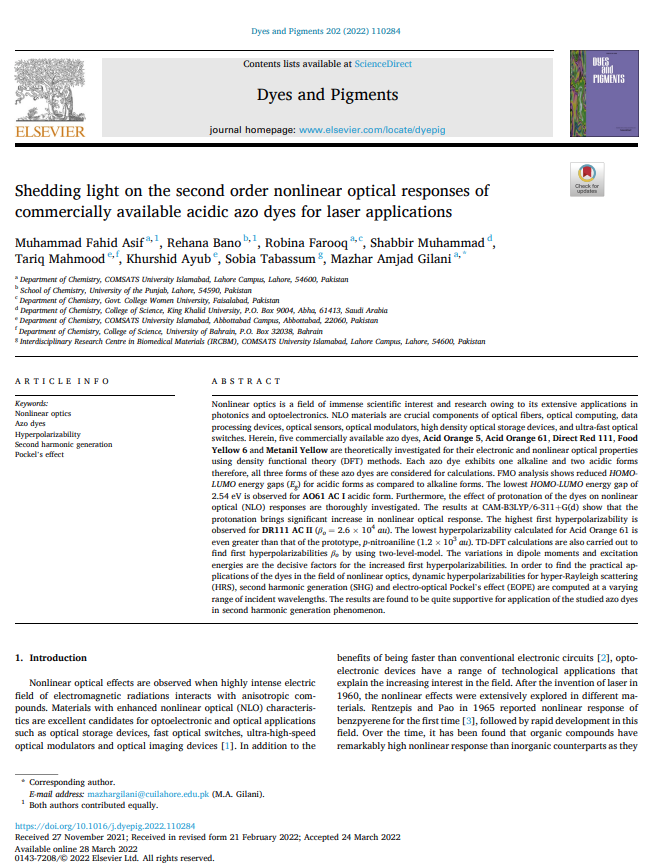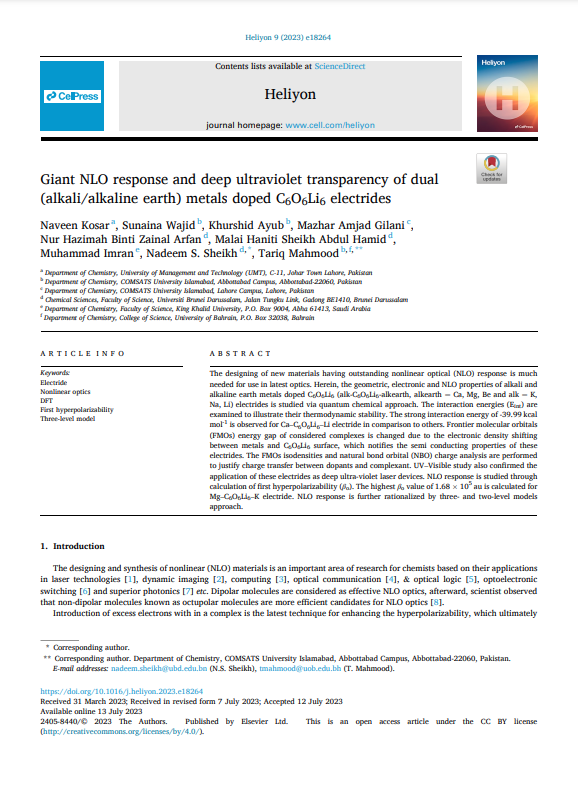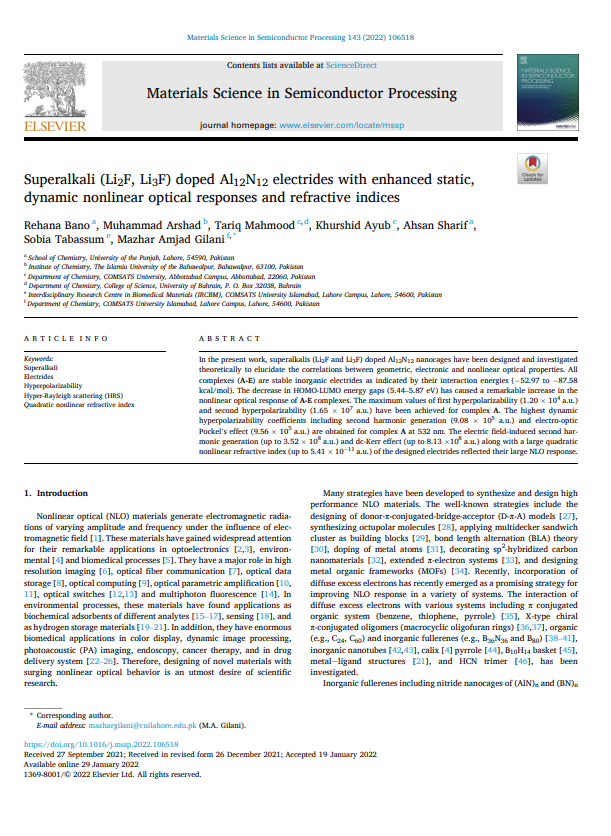وثيقة
المعرف
https://digitalrepository.uob.edu.bh/id/cc550768-d2b0-42cf-ad28-2ded3da947ce
Shedding light on the second order nonlinear optical responses of commercially available acidic azo dyes for laser applications
وكيل مرتبط
Bano , R, مؤلف مشارك
Farooq , R, مؤلف مشارك
Muhammad , S, مؤلف مشارك
Mahmood , T, مؤلف مشارك
Ayub , K, مؤلف مشارك
Tabassum , S, مؤلف مشارك
Gilani , M.A, مؤلف مشارك
دولة النشر
Kingdom of Bahrain
مكان النشر
sakhir, bahrain
الناشر
University of Bahrain
تاريخ النشر
2022
اللغة
الأنجليزية
الموضوع
الملخص الإنجليزي
ABSTRACT :
Nonlinear optics is a field of immense scientific interest and research owing to its extensive applications in
photonics and optoelectronics. NLO materials are crucial components of optical fibers, optical computing, data processing devices, optical sensors, optical modulators, high density optical storage devices, and ultra-fast optical switches. Herein, five commercially available azo dyes, Acid Orange 5, Acid Orange 61, Direct Red 111, Food Yellow 6 and Metanil Yellow are theoretically investigated for their electronic and nonlinear optical properties using density functional theory (DFT) methods. Each azo dye exhibits one alkaline and two acidic forms therefore, all three forms of these azo dyes are considered for calculations. FMO analysis shows reduced HOMOLUMO energy gaps (Eg) for acidic forms as compared to alkaline forms. The lowest HOMO-LUMO energy gap of 2.54 eV is observed for AO61 AC I acidic form. Furthermore, the effect of protonation of the dyes on nonlinear optical (NLO) responses are thoroughly investigated. The results at CAM-B3LYP/6-311+G(d) show that the protonation brings significant increase in nonlinear optical response. The highest first hyperpolarizability is observed for DR111 AC II (βo = 2.6 × 104 au). The lowest hyperpolarizability calculated for Acid Orange 61 is even greater than that of the prototype, p-nitroaniline (1.2 × 103 au). TD-DFT calculations are also carried out to find first hyperpolarizabilities βo by using two-level-model. The variations in dipole moments and excitation energies are the decisive factors for the increased first hyperpolarizabilities. In order to find the practical applications of the dyes in the field of nonlinear optics, dynamic hyperpolarizabilities for hyper-Rayleigh scattering (HRS), second harmonic generation (SHG) and electro-optical Pockel’s effect (EOPE) are computed at a varying range of incident wavelengths. The results are found to be quite supportive for application of the studied azo dyes
in second harmonic generation phenomenon.
عنوان الدورية
Dyes and Pigments
المجموعة
قالب العنصر
مقال دورية





